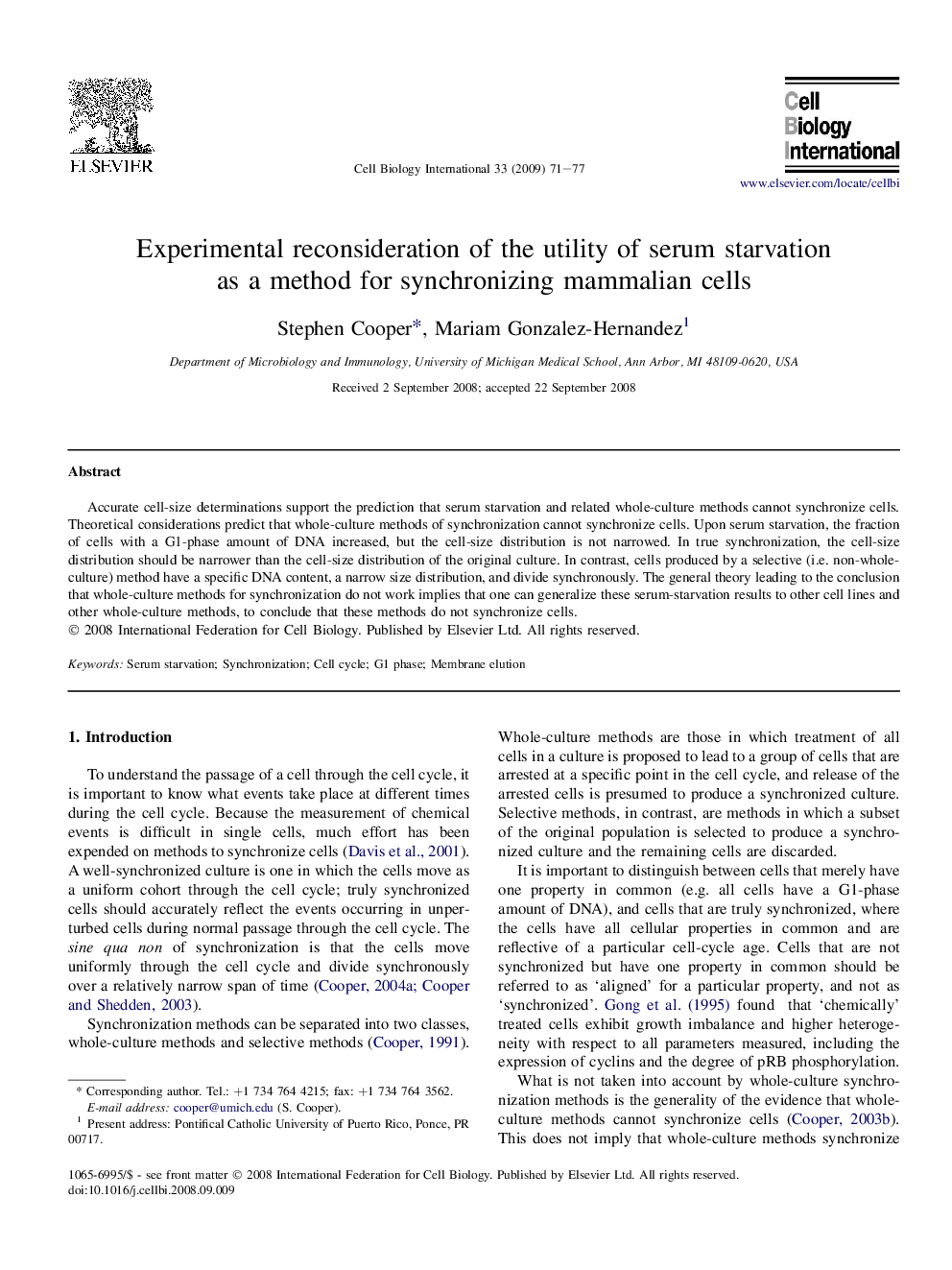| Article ID | Journal | Published Year | Pages | File Type |
|---|---|---|---|---|
| 2067094 | Cell Biology International | 2009 | 7 Pages |
Abstract
Accurate cell-size determinations support the prediction that serum starvation and related whole-culture methods cannot synchronize cells. Theoretical considerations predict that whole-culture methods of synchronization cannot synchronize cells. Upon serum starvation, the fraction of cells with a G1-phase amount of DNA increased, but the cell-size distribution is not narrowed. In true synchronization, the cell-size distribution should be narrower than the cell-size distribution of the original culture. In contrast, cells produced by a selective (i.e. non-whole-culture) method have a specific DNA content, a narrow size distribution, and divide synchronously. The general theory leading to the conclusion that whole-culture methods for synchronization do not work implies that one can generalize these serum-starvation results to other cell lines and other whole-culture methods, to conclude that these methods do not synchronize cells.
Related Topics
Life Sciences
Biochemistry, Genetics and Molecular Biology
Biophysics
Authors
Stephen Cooper, Mariam Gonzalez-Hernandez,
